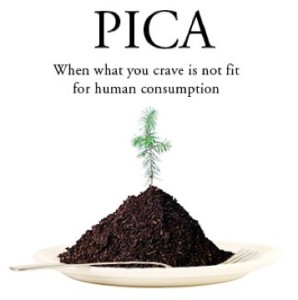Pica Disorder Treatment Options
Every now and then, most everyone experiences unusual cravings for certain foods like butterscotch candies or pickles or odd food combinations like peanut butter and broccoli. People affected by pica disorder also experience cravings, but not for food in the traditional sense.
Most commonly seen among children, developmentally disabled persons and pregnant woman, pica disorder can pose some very real health dangers, according to the National Center for Biotechnology Information. If you or someone you know exhibits pica disorder symptoms, it’s important to seek treatment for this condition, sooner rather than later.
Call our toll-free helpline at 888-647-0051 (Who Answers?) for more information on pica disorder treatment options.
Pica Disorder Causes & Symptoms
Causes of pica disorder can vary considerably and tend to involve one or more of the following conditions:
- Cultural norm
- Developmental disorders
- Nutrient deficiencies
- Psychosis
Whereas American culture views pica behaviors as abnormal, this is not he case within Mexican and African cultures. For this reason, cases of pica disorder may well go unreported in the U. S. due to the stigma surrounding the behavior.
According to the U. S. National Library of Medicine, types of nonfood items ingested may include:

Some people with pica disorder may ingest crayons.
- Dirt
- Sand
- Paint chips
- Ice
- Hairballs
- Chalk
- Ashes
- Crayons
- Plastic
- Baby powder
- Paper
- Grass
- Toilet tissue
Treatment Options for Pica Disorder
The type of treatment option best suited for pica disorder depends on the underlying cause of the behavior. Whereas one treatment approach may emphasize family guidance, such as for developmental disability another may focus on psychosocial or behavioral training.
Some of more commonly used treatment approaches include:
- The pica box
- Discrimination training
- Teaching self-restraint
Ultimately, a physician or psychologist should be consulted when considering treatment options.
Pica Box
As the need for some form of oral stimulation can be a motivator for pica behavior, redirecting a person’s choice of “edibles” is the overall goal of the pica box. The pica box contains a collection of items that are safe for a person to chew on, bite or ingest.
Ideally, items in the box should closely resemble the types of pica-based items or materials that attracts a person in terms of taste, texture and appearance. By keeping a supply of safe items on hand at all times, the risk of harm is eliminated.
Discrimination Training
Discrimination training entails teaching a person to understand the difference between actual food and non-food items. Commonly used in cases of developmental disability, discrimination training also uses rewards for correct responses, such as stickers.
Developmentally disabled individuals may also benefit from visual cues or charts that show pictures of edible and non-edible food items.
Teaching Self Restraint
Teaching self restraint works in much the same way as exposure therapy. When treating pica disorder, a person learns to not give in to the urge to eat a non-food item when it’s placed in front of him or her. Over time, this practice works to eliminate the underlying desire or craving.
If you have more questions about pica disorder or need help finding a treatment provider, call our helpline at 888-647-0051 (Who Answers?) to speak with one of our phone counselors.






